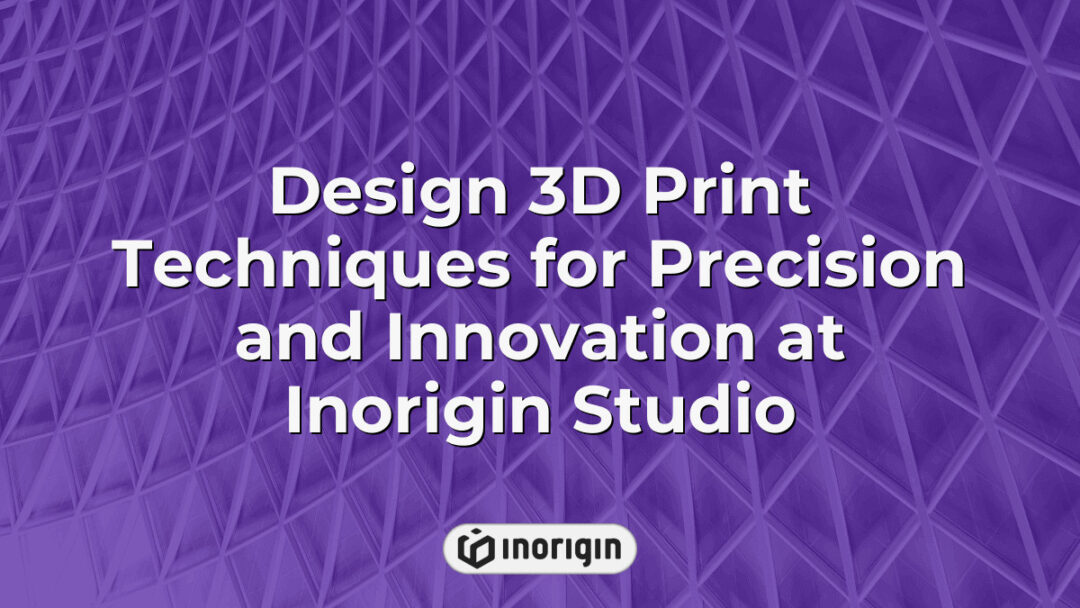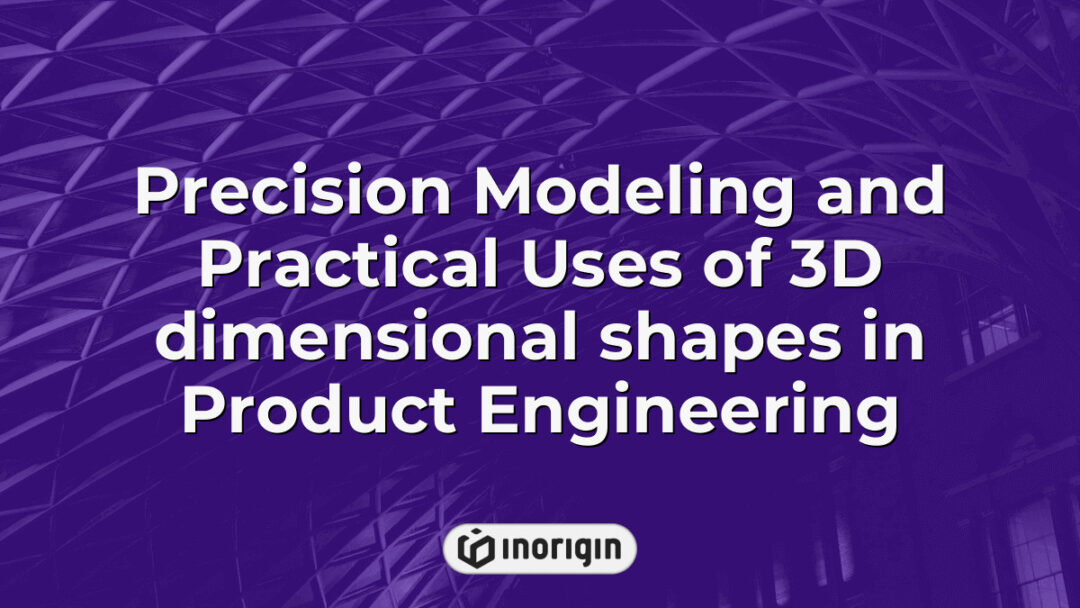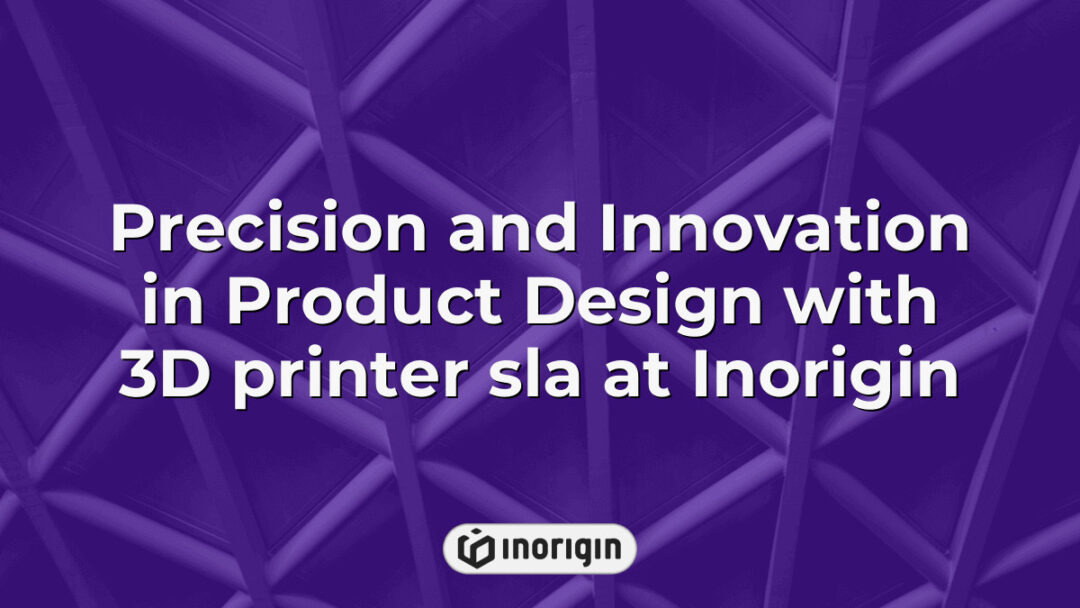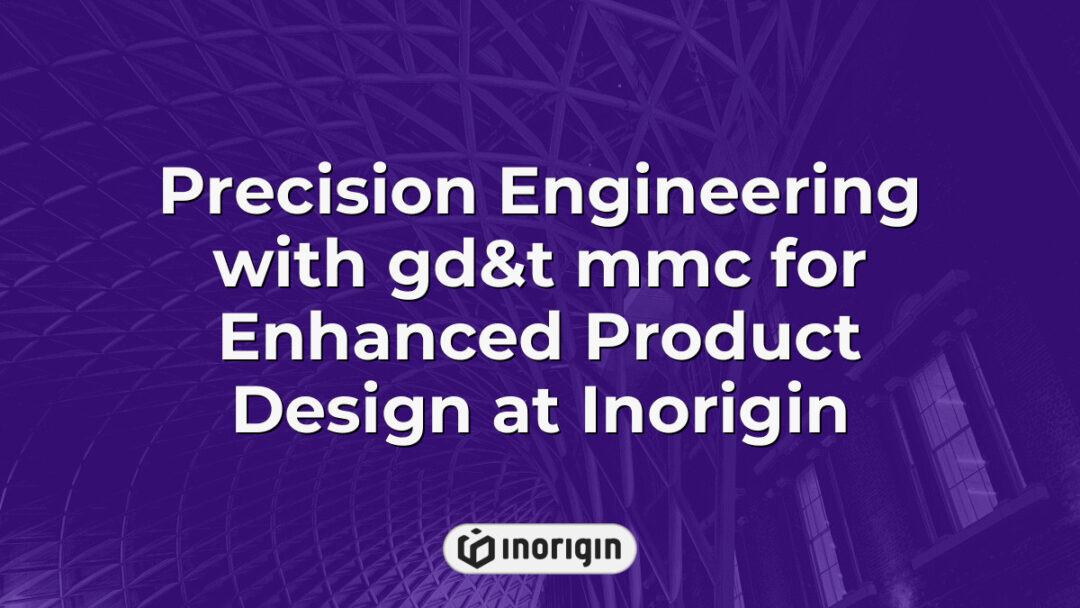In the ever-evolving landscape of modern manufacturing, Design 3D Print stands as one of the most revolutionary innovations since the advent of mass production itself. This groundbreaking technology has transcended traditional design methodologies, empowering creators to transform complex digital blueprints into tangible objects with unparalleled precision and efficiency. By employing additive manufacturing techniques, Design 3D Print not only enhances customization capabilities but also significantly reduces material waste and development time. As industries ranging from aerospace to healthcare harness its transformative potential, a paradigm shift in product design and production is emerging, reshaping both economic models and creative practices across the globe.
| Aspect | Key Takeaway |
|---|---|
| Revolutionary Innovation | Design 3D print leverages additive manufacturing to revolutionize precision and efficiency in product development, enabling complex digital models to become high-quality physical objects. |
| 3D Printing Technologies | Understanding different methods like FDM, SLA, and SLS helps select the appropriate technology tailored to specific project requirements and material compatibility. |
| Material Selection | Choosing the right materials, including thermoplastics, metals, and ceramics, is essential to optimize performance and suitability for each 3D printed design. |
| Design Approach | Implementing a systematic design process that considers functionality, printing constraints, and specialized software ensures seamless transition from concept to prototype. |
| Addressing Design Challenges | Overcoming geometric complexity and support structure limitations through design simplification and orientation strategies enhances print success and durability. |
| Industry Applications | Fields such as aerospace and healthcare capitalize on 3D printing for producing lightweight parts and custom medical devices, improving efficiency and user outcomes. |
| Sustainability Strategies | Incorporating biodegradable materials and optimizing print parameters promotes environmentally responsible 3D printing practices without sacrificing product quality. |
Overview Of 3D Printing Technologies
The overview of 3D printing technologies encompasses a variety of methods that facilitate the transformation of digital designs into physical objects. Initially, it is essential to identify some of the best CAD software available for creating intricate models; these programs are instrumental in enabling designers to produce files compatible with various 3D printing techniques. Following this, different types of additive manufacturing processes can be classified, including Fused Deposition Modeling (FDM), Stereolithography (SLA), and Selective Laser Sintering (SLS). Each method employs distinct principles, making certain approaches more suitable for specific applications or project requirements. Furthermore, when considering the implementation of a 3D printed project, factors such as material selection and resolution play significant roles in determining the final quality and functionality of the produced object. Consequently, understanding these diverse technologies provides valuable insights into how advanced design methodologies converge with practical production capabilities within the realms of engineering and art.
Materials Used In 3D Printing
The choice of materials in 3D printing is crucial, as it significantly influences the feasibility and performance of specific applications. Some theories posit that the advancement of 3D printing technologies relies heavily on material innovation; this assertion holds considerable merit when considering various factors such as strength, flexibility, and thermal resistance. To illustrate this point, three primary categories of materials utilized in 3D printing will be examined: (1) thermoplastics, which are widely used due to their versatility and ease of processing for consumer-grade D printers, (2) metals, essential for creating robust components suitable for industrial applications requiring high durability, and (3) ceramics, often employed in specialized fields such as healthcare and art owing to their unique properties conducive to intricate designs. By employing different types of materials within a digital model process framework, designers can harness the distinctive characteristics of each category to achieve desired results tailored to specific end-uses. The interplay between material selection and design intricacies underscores the complexity inherent in optimizing 3D printed products across diverse sectors.
Step-by-Step Guide To Designing For 3D Printing
Designing for 3D printing necessitates a methodical approach to ensure the successful realization of digital models in physical form. Initially, it is critical to conceptualize the design based on intended functionality and aesthetic appeal; this serves as the foundation upon which subsequent decisions will be made. Subsequently, consideration must be given to the limitations of various 3D printing technologies, as these can influence material choice and structural integrity of the finished product. Furthermore, effectively utilizing software tools that specialize in 3D modeling facilitates precision and allows designers to simulate potential challenges before production begins. As designers advance through each stage of development—from ideation to model execution—they confront not only technical hurdles but also opportunities for innovation within their designs.
- Emotional engagement with designing:
- Anticipation:
- Visualizing an innovative concept moving from screen to reality
- The excitement of unique possibilities unfolding during the crafting process
- Fulfillment:
- The satisfaction derived from transforming abstract ideas into tangible objects
- Opportunities for creative expression showcased through intricate 3D models
The comprehensive understanding of how to navigate each phase when creating a design tailored for 3D printing ultimately enhances both the efficiency and effectiveness of the resulting products. Emphasis on attention to detail during the design process ensures optimal compatibility with chosen materials and techniques, thereby fostering a seamless transition from virtual simulations to actual prints.
Common Design Challenges And Solutions
The realm of 3D printing presents numerous design challenges that require innovative solutions to optimize the functionality and aesthetics of digital designs. One predominant issue is related to geometric complexity, where intricate models can become difficult to print, leading to structural weaknesses or print failures. To address this challenge, designers are encouraged to simplify geometries while ensuring that aesthetic properties remain intact. Furthermore, materials play a critical role in the success of a d model; thus, understanding material limitations—such as strength, flexibility, and adhesion—is essential for producing robust prints. Another common challenge involves support structures needed during the printing process; inadequate supports may result in defects or deformations in the final product. Employing strategies such as orientation optimization and designing self-supporting features can mitigate these problems effectively. Through careful consideration of these factors within digital designs, successful outcomes in 3D printing endeavors can be achieved, enhancing both practicality and artistic expression.
Innovative Applications In Various Industries
Innovative applications in various industries demonstrate the transformative potential of 3D design, much like a kaleidoscope reframing reality through intricate patterns. The integration of Computer-Aided Design (CAD) enables designers to create precise and complex geometries that were previously unattainable with traditional manufacturing methods. For instance, the aerospace sector has embraced 3D printing technology for producing lightweight components, which enhances fuel efficiency while maintaining structural integrity. Similarly, the medical field employs custom d printed projects such as prosthetics and implants that are tailored to individual patient anatomies, thereby improving outcomes and patient comfort. As industries continue to explore these advancements, the convergence of creativity and technology indicates a pivotal shift towards more specialized production processes across diverse fields.
Frequently Asked Questions
What Are The Costs Associated With 3D Printing, Including Equipment, Materials, And Maintenance?
The costs associated with 3D printing encompass various components, including equipment acquisition, material expenses, and ongoing maintenance. For instance, a hypothetical scenario involving a small manufacturing startup can illustrate these financial considerations: the initial investment in a mid-range Fused Deposition Modeling (FDM) printer may amount to approximately $5,000. In addition to this primary expenditure, businesses must factor in recurring costs for filament materials, which typically range from $20 to $100 per kilogram depending on the type and quality required for specific applications. Furthermore, regular maintenance of the equipment is essential to ensure optimal functionality; this may involve periodic purchases of replacement parts or consumables such as nozzles and build plates. Transitioning from upfront investments to variable operating costs reveals that companies must also consider electricity consumption and workspace requirements when establishing their overall budget for 3D printing initiatives. Thus, while the technology offers innovative capabilities across industries, it necessitates careful financial planning due to its multifaceted cost structure.
How Does Post-processing Improve The Quality Of 3D Printed Objects?
Post-processing plays a crucial role in enhancing the quality of 3D printed objects, addressing limitations inherent to additive manufacturing processes. Primarily, post-processing techniques mitigate issues such as surface roughness, dimensional accuracy, and material strength that may not be adequately resolved through printing alone. Various methods are employed to achieve these improvements, including but not limited to:
- Sanding and Polishing: This technique helps eliminate visible layer lines and irregularities on the surface.
- Chemical Treatments: Solvents can dissolve or smooth out the outer layers of prints made from certain materials, resulting in enhanced aesthetics.
- Painting and Coating: Application of paints or protective coatings enhances appearance while also providing additional durability.
- Heat Treatment: Certain materials respond well to heat application which can relieve internal stresses and improve mechanical properties.
- Assembly Modifications: Assembly of multiple parts may require adjustments that refine fit and functionality beyond what is possible with direct printing.
Employing these post-processing strategies allows for greater precision in achieving desired attributes within finished products. In light of this context, it becomes evident that effectively executed post-processing not only augments aesthetic qualities but also significantly boosts functional performance, thereby expanding the applications across various industries reliant on 3D printed components.
What Software Tools Are Recommended For Designing 3D Prints?
The design of 3D printed objects is significantly influenced by the choice of software tools, which facilitate various aspects of the modeling process. First and foremost, Computer-Aided Design (CAD) software serves as a foundational element in creating precise geometries required for successful 3D printing; examples include SolidWorks and Autodesk Fusion 360. These applications not only allow users to construct intricate models but also provide features such as simulations to predict material behavior under different conditions. Transitioning from CAD-based environments, slicer software plays an equally critical role by converting digital models into instructions that printers can interpret; popular options like Cura and PrusaSlicer offer extensive settings that optimize print quality while addressing issues of layer adhesion and support structures. Moreover, niche programs focused on specific industries—such as Tinkercad for educational purposes or Blender for artistic endeavors—demonstrate the versatility needed across varying applications within the realm of 3D printing. Collectively, these tools contribute to enhanced efficiencies throughout the design phases, thereby establishing a robust workflow essential for producing high-quality 3D printed items. As technology advances and user needs evolve, continual adaptation and integration of new software capabilities will be vital in pushing the boundaries of what can be achieved through additive manufacturing processes.
Are There Any Specific Regulations Or Certifications For 3D Printed Products?
The regulation of 3D printed products is a multifaceted issue that involves various standards and certifications across different industries. Initially, it is essential to recognize that the regulatory environment may vary significantly by region and application. For instance, in the medical field, organizations such as the U.S. Food and Drug Administration (FDA) mandate rigorous evaluations for 3D printed devices to ensure their safety and efficacy before they can be marketed. Moreover, certain materials utilized in 3D printing are subject to compliance with health and environmental regulations, necessitating adherence to guidelines established by entities like the Environmental Protection Agency (EPA). Transitioning from these specific cases, additional considerations arise in sectors such as aerospace and automotive manufacturing, where certification processes often involve international consensus standards, including those outlined by ISO (International Organization for Standardization) or ASTM International. Consequently, addressing potential liabilities linked to product failures becomes paramount; manufacturers must ensure that adequate quality control measures are implemented throughout the production process of 3D printed items. Therefore, navigating the complex landscape of regulations and certifications is critical for ensuring not only compliance but also consumer trust in 3D printed products across diverse applications.
How Can I Ensure The Sustainability Of My 3D Printing Practices?
Sustainability in 3D printing practices is increasingly recognized as a vital consideration for manufacturers and designers, reflecting a broader commitment to environmental stewardship. To achieve sustainable outcomes, several strategies can be employed. Firstly, the selection of materials plays a crucial role; opting for biodegradable or recycled filaments not only minimizes resource depletion but also reduces landfill waste associated with traditional manufacturing processes. Moreover, optimizing print settings—such as speed and temperature—can enhance energy efficiency while maintaining product integrity. Transitioning from single-use designs to modular systems also facilitates longevity and recyclability of products, thereby contributing positively to sustainability efforts. Additionally, implementing closed-loop recycling systems within production environments further enhances material reuse and diminishes overall ecological impact. Through these multifaceted approaches, the pursuit of sustainability in 3D printing can effectively align economic viability with environmental responsibility.
Conclusion
The rapid evolution of 3D printing technology continues to transform multiple industries, with reports indicating that the global market is projected to reach $34.8 billion by 2024. This growth underscores the importance of effective design strategies and innovative applications in harnessing the full potential of this revolutionary manufacturing process.
Related posts:
- Innovative Approaches to Designing and Optimizing 3D Print Models in Professional Product Development
- Comprehensive Guide to Accessing and Utilizing 3D Print Models Free for Innovative Product Design
- Precision Workflow Enhancements and Feature Guide for 3D Print Software at Inorigin
- Innovations Driving Precision and Complexity in 3D Print Designs at Inorigin
- Precision Techniques for 3D Print Files at Inorigin’s Advanced 3D Printing Studio
- Unlimited Creativity with 3D Print Files Free From Leading Online Platforms




